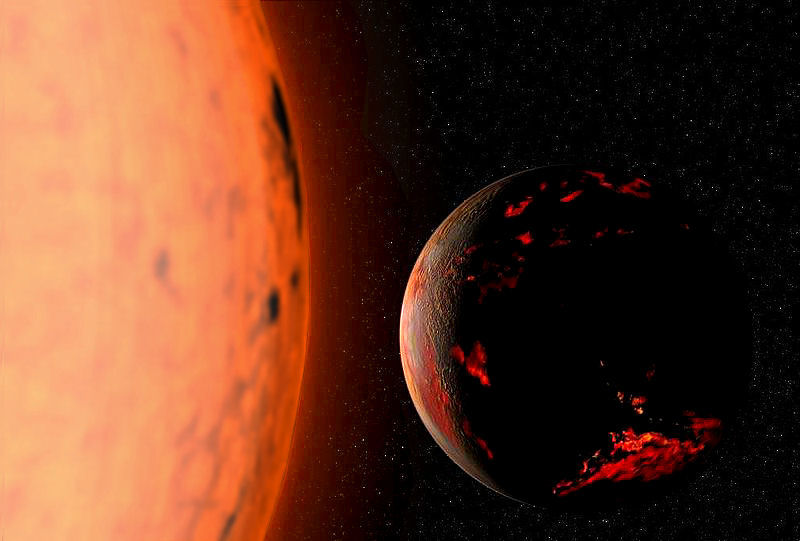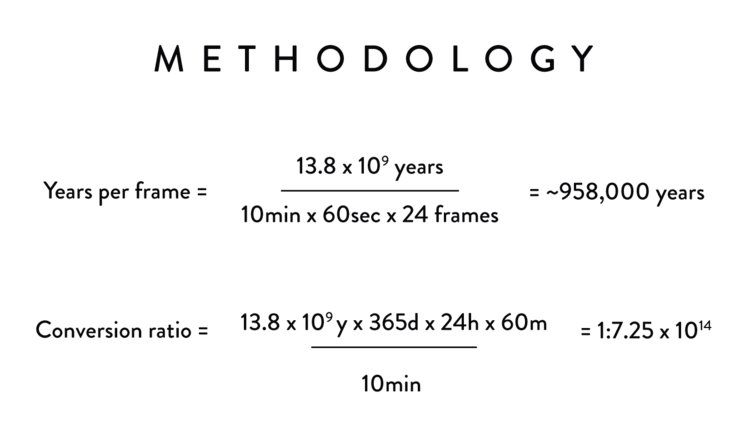|
Timelapse Of The Future
''Timelapse of the Future:'' ''A Journey to the End of Time'' is a 2019 Short film, short epic film, epic Animated documentary, animated pseudo-documentary web film created by American astronomy-themed musician and filmmaker John Boswell (musician), John D. Boswell, following ''Timelapse of the Entire Universe''.Boswell, John D. (February 14, 2019)"Coming soon: my most ambitious release yet". ''Melodysheep''. Retrieved July 22, 2020 – via Patreon. The 29-minute film is a wiktionary:flowmotion, flowmotion—a combination of a Hyperlapse, hyper-lapse, Time-lapse photography, time-lapse, and regular shots—of the universe from 2019 to the Ultimate fate of the universe, end of time, with the lapse doubling every five seconds. The film consists of self-made and fair use footages films, the Internet, and speeches by scientists, using current knowledge, and combining different hypotheses. After six months of production, it was released on YouTube and screened on several venues; it ... [...More Info...] [...Related Items...] OR: [Wikipedia] [Google] [Baidu] |
Timeline Of The Far Future
While the future cannot be predicted with certainty, present understanding in various scientific fields allows for the prediction of some far-future events, if only in the broadest outline. These fields include astrophysics, which studies how planets and stars form, interact, and die; particle physics, which has revealed how matter behaves at the smallest scales; evolutionary biology, which studies how life evolves over time; plate tectonics, which shows how continents shift over millennia; and sociology, which examines how human societies and cultures evolve. The far future begins after the current millennium comes to an end, starting with the 4th millennium in 3001 CE, until the furthest reaches of future time. These timelines include alternative future events that address unresolved scientific questions, such as whether humans will become extinct, whether the Earth survives when the Sun expands to become a red giant and whether proton decay will be the eventual end of all ... [...More Info...] [...Related Items...] OR: [Wikipedia] [Google] [Baidu] |
Exploratorium
The Exploratorium is a museum of science, technology, and arts in San Francisco, California. Characterized as "a mad scientist's penny arcade, a scientific funhouse, and an experimental laboratory all rolled into one", the participatory nature of its exhibits and its self-identification as a center for informal learning has led to it being cited as the prototype for participatory museums around the world. The Exploratorium was founded by physicist and educator Frank Oppenheimer and opened in 1969 at the Palace of Fine Arts, its home until January 2, 2013. On April 17, 2013, the Exploratorium reopened at Piers 15 and 17 on San Francisco's Embarcadero. The historic interior and exterior of Pier 15 were renovated extensively prior to the move, and are divided into several galleries mainly separated by content, including the physics of seeing and listening (Light and Sound), Human Behavior, Living Systems, Tinkering (including electricity and magnetism), the Outdoor Gallery, and ... [...More Info...] [...Related Items...] OR: [Wikipedia] [Google] [Baidu] |
Hyperlapse
Hyperlapse or moving time-lapse (also stop-motion time-lapse, walklapse, spacelapse) is a technique in time-lapse photography for creating motion shots. In its simplest form, a hyperlapse is achieved by moving the camera a short distance between each shot. The first film using the hyperlapse technique dates to 1995. Technique Regular time-lapse involves taking photos at a regular interval with a camera mounted on a tripod or using a motorized dolly and/or pan-and-tilt head to add limited motion to the shot. Hyperlapse relies on the time-lapse principle, but adds movement over much longer distances. This technique allows using long exposures to create motion blur. The resulting image sequence is stabilized in post-production. The camera can also be mounted on a hand-held gimbal to achieve smooth motion while walking. A "walking hyperlapse" is a special hyperlapse technique that requires a person in the frame to walk at a specified interval. When played back, the person will ... [...More Info...] [...Related Items...] OR: [Wikipedia] [Google] [Baidu] |
Patreon
Patreon (, ) is a membership platform that provides business tools for content creators to run a subscription service. It helps creators and artists earn a monthly income by providing rewards and perks to their subscribers. Patreon charges a commission of 9 to 12 percent of creators' monthly income, in addition to payment processing fees. Patreon is used by YouTube videographers, webcomic artists, writers, podcasters, musicians, adult content creators, and other categories of creators who post regularly online. It allows artists to receive funding directly from their fans, or patrons, on a recurring basis or per work of art. The company is based in San Francisco. History Patreon was co-founded in May 2013 by developer Sam Yam and musician Jack Conte, who was looking for a way to make a living from his YouTube videos. They developed a platform that allowed 'patrons' to pay a set amount of money every time an artist created a work of art. The company raised $2.1 million in ... [...More Info...] [...Related Items...] OR: [Wikipedia] [Google] [Baidu] |
Timelapse Of The Entire Universe
''Timelapse of the Entire Universe'' is a 2018 short epic animated pseudo-documentary web film created by American astronomy-themed musician and filmmaker John D. Boswell. Inspired by the Cosmic Calendar, the 10-minute film is a hyperlapse of the universe from its start to current humanity, with every second representing 22 million years, with the entire humanity represented in a short time, using current knowledge. The film was originally released on Boswell's YouTube channel Melodysheep on March 7, but it was eventually taken down due to a copyright infringement regarding Morgan Freeman's voice. A revised version was uploaded 3 days later, on March 10, 2018. A year and 10 days later, a follow-up, ''Timelapse of the Future'', was released. Plot The Big Bang occurs, and the first stars are formed after the mixture of elements. Gravity then expands the universe to seemingly infinite proportions, and galaxies begin to form. Some galaxies form so close together that th ... [...More Info...] [...Related Items...] OR: [Wikipedia] [Google] [Baidu] |
Astronomy
Astronomy () is a natural science that studies astronomical object, celestial objects and phenomena. It uses mathematics, physics, and chemistry in order to explain their origin and chronology of the Universe, evolution. Objects of interest include planets, natural satellite, moons, stars, nebulae, galaxy, galaxies, and comets. Relevant phenomena include supernova explosions, gamma ray bursts, quasars, blazars, pulsars, and cosmic microwave background radiation. More generally, astronomy studies everything that originates beyond atmosphere of Earth, Earth's atmosphere. Cosmology is a branch of astronomy that studies the universe as a whole. Astronomy is one of the oldest natural sciences. The early civilizations in recorded history made methodical observations of the night sky. These include the Babylonian astronomy, Babylonians, Greek astronomy, Greeks, Indian astronomy, Indians, Egyptian astronomy, Egyptians, Chinese astronomy, Chinese, Maya civilization, Maya, and many anc ... [...More Info...] [...Related Items...] OR: [Wikipedia] [Google] [Baidu] |
Web Film
A web film is a film made with the medium of the Internet and its distribution constraints in mind.Kronschnabl, A & Rawlings, T, "Plug In & Turn On: A Filmmakers Guide to the Internet''. London:Marion Boyars. 2004. http://www.plugincinema.com/plugin/about_us/plugin_book.htm This term aims to differentiate content made for the Internet from content made for other media, such as cinema or television, that has been converted into a World Wide Web-compatible format. Web films are a form of new media. Forms There are broadly three forms of films that can be encountered on the Internet: See also *Pluginmanifesto *Web series A web series (also known as a web show) is a series of scripted or non-scripted online videos, generally in episodic form, released on the Internet, which first emerged in the late 1990s and became more prominent in the early 2000s. A single i ... References External linksEjemplos de Películas Film and video terminology Film and video technology Inter ... [...More Info...] [...Related Items...] OR: [Wikipedia] [Google] [Baidu] |
Pseudo-documentary
A pseudo-documentary or fake documentary is a film or video production that takes the form or style of a documentary film but does not portray real events. Rather, scripted and fictional elements are used to tell the story. The pseudo-documentary, unlike the related mockumentary, is not always intended as satire or humor. It may use documentary camera techniques but with fabricated sets, actors, or situations, and it may use digital effects to alter the filmed scene or even create a wholly synthetic scene. Film Orson Welles gained notoriety with his radio show and hoax ''War of the Worlds'' which fooled listeners into thinking the Earth was being invaded by Martians. Film critic Jonathan Rosenbaum says this is Welles' first pseudo-documentary. Pseudo-documentary elements were subsequently used in his feature films. For instance, Welles created a pseudo-documentary newsreel which appeared within his 1941 film ''Citizen Kane'', and he began his 1955 film, ''Mr. Arkadin'', with a pseu ... [...More Info...] [...Related Items...] OR: [Wikipedia] [Google] [Baidu] |
Animated Documentary
The animated documentary (also known as anidoc) is a moving image form that combines animation and documentary. This form should not be confused with documentaries about movie and TV animation history that feature excerpts. History The first recognized example of this genre is Winsor McCay's 1918 12-minute-long film '' The Sinking of the Lusitania'', which uses animation to portray the 1915 sinking of after it was struck by two torpedoes launched by a German U-boat; an event of which no recorded film footage is known to exist.DelGaudio, Sybil. ''If Truth Be Told, Can Toons Tell It? Documentary and Animation''. Film History 9:2 (1997) p. 189-199 Since the 1920s, animation has been used in educational and social guidance films, and has often been used to illustrate abstract concepts in mainly live-action examples of these genres. Early examples of fully animated educational films are ''The Einstein Theory of Relativity'' and ''Evolution'' (both 1923) by Max and Dave Flei ... [...More Info...] [...Related Items...] OR: [Wikipedia] [Google] [Baidu] |
Epic Film
Epic films are a style of filmmaking with large-scale, sweeping scope, and spectacle. The usage of the term has shifted over time, sometimes designating a film genre and at other times simply synonymous with big-budget filmmaking. Like epics in the classical literary sense it is often focused on a heroic character. An epic's ambitious nature helps to set it apart from other types of film such as the period piece or adventure film. Epic historical films would usually take a historical or a mythical event and add an extravagant setting and lavish costumes, accompanied by an expansive musical score with an ensemble cast, which would make them among the most expensive of films to produce. The most common subjects of epic films are royalty, and important figures from various periods in world history. Characteristics The term "epic" originally came from the poetic genre exemplified by such works as the ''Epic of Gilgamesh'' and the works of the Trojan War Cycle. In classical litera ... [...More Info...] [...Related Items...] OR: [Wikipedia] [Google] [Baidu] |
Short Film
A short film is any motion picture that is short enough in running time not to be considered a feature film. The Academy of Motion Picture Arts and Sciences defines a short film as "an original motion picture that has a running time of 40 minutes or less, including all credits". In the United States, short films were generally termed short subjects from the 1920s into the 1970s when confined to two 35 mm reels or less, and featurettes for a film of three or four reels. "Short" was an abbreviation for either term. The increasingly rare industry term "short subject" carries more of an assumption that the film is shown as part of a presentation along with a feature film. Short films are often screened at local, national, or international film festivals and made by independent filmmakers with either a low budget or no budget at all. They are usually funded by film grants, nonprofit organizations, sponsor, or personal funds. Short films are generally used for industry experience and ... [...More Info...] [...Related Items...] OR: [Wikipedia] [Google] [Baidu] |






